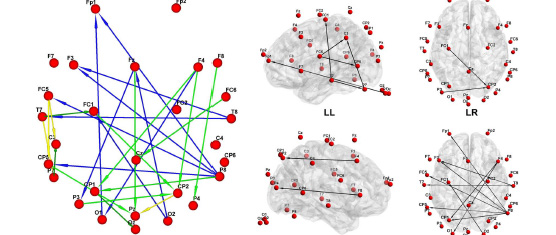
Abstract
Plasticity-based spontaneous recovery and rehabilitation intervention of stroke-induced hemianopia have drawn great attention in recent years. However, the underlying neural mechanism remains unknown. This study aims to investigate brain network disruption and reorganization in hemianopia patients due to mild occipital stroke. Resting-state networks were constructed from 12 hemianopia patients with right occipital infarct by partial directed coherence analysis of multi-channel electroencephalograms. Compared with control subjects, the patients presented enhanced connectivity owing to newly formed connections. Compensational connections mostly originated from the peri-infarct area and targeted contralesional frontal, central, and parietal cortices. These new ipsilesional-to-contralesional inter-hemispheric connections coordinately presented significant correlation with the extent of vision loss. The enhancement of connectivitymight be the neural substrate for brain plasticity in stroke-induced hemianopia and may shed light on plasticity-based recovery or rehabilitation.

